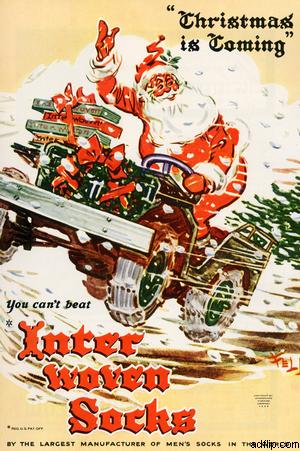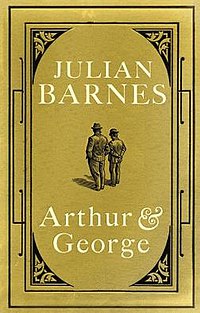I love trivia about the English language! The following examples are pulled from all over the internet, so can't vouch for their veracity, but they sound likely.
Did you know ....
- Letters
- The most commonly used letter in the alphabet is 'e'. (1 out of every 8 letters written is an 'e'.)
- The least used letter in the alphabet is 'q'.
- The youngest letters in the English language are 'j', 'v', and 'w'.
- The letter 'w' is the only letter in the alphabet that doesn't have one syllable. (It has three.)
- Skiing is the only word with double 'i'.
- 'Subbookkeeper' is the only word in common English with four consecutive double letters.
- There are only three words in the English language with the letter combination 'uu': muumuu, vacuum and continuum.
- Words that contain the letter combination 'abc': abcaree, abchalazal, abcoulomb, crabcake, dabchick, drabcloth.
- words that contain the letter combination 'xyz': hydroxyzine, xyzzor.
- As recently as the 19th century, the ampersand (&) was considered to be the 27th letter of the alphabet. It was called “and” or sometimes “et”. "Ampersand" is a distortion of “and per se and,” which is what children were taught to say after "z."
- Word Parts/Affixes
- Dreamt is the only word that ends in '-mt'.
- there are only 4 words in the English language which end in '-dous': hazardous, horrendous, stupendous, tremendous.
- Only 3 words in standard English begin with the letter combination 'dw-': dwarf, dwindle, dwell.
- 'Underground' and 'underfund' are the only words in the English language that begin and end with the letters 'und'.
- 'Angry' and 'hungry' are the only words in the English language ending in '-gry'.
- Fun with Words
- The most commonly used word in English conversation is 'I'.
- The most commonly used words in written English include: the, of, and, a, to, in, is, you, it, he, for, was, on, are, as, with, his, they, at, be, this, from, I, have, or, by, one, had, not, but, what, all, were, when, we, there, can, an, your, which, their, said, if, do.
- The word 'set' has more definitions than any other word in the English language. (192 definitions.)
- The longest one syllable words in the English language are 'screeched', 'scratched' and 'strengths'.
- The shortest 5 syllable word in the english language is 'ideology'.
- The longest word in common English is 'pneumonoultramicroscopicsilicovolcanoconiosis'.
- The longest word in common English with no repeated letters is 'uncopyrightable'.
- 'Floccinaucinihilipilification' is the longest word without the letter 'e'.
- The word 'thitherwards' contains 23 words that can be made without rearranging any of its letters: a, ar, ard, ards, er, he, her, hi, hit, hithe, hither, hitherward, hitherwards, I, it, ither, the, thitherward, thitherwards, wa, war, ward, wards.
- The word 'almost' is the longest word in common English with all the letters in alphabetical order. ('Aegilops' is longer, but not in common usage.)
- 'Spoonfed' is the longest word in common English with its letters arranged in reverse alphabetical order.
- The longest words in which no letter appears more than once: dermatoglyphics, misconjudatedly, uncopyrightable, subdermatoglyphic.
- The longest words in which each letter occurs at least twice: unprosperousness, esophagographers.
- Words in which a single letter is used 6 times: degenerescence, indivisibility, nonannouncement.
- The longest word in common English that is a natural palindrome: redivider.
- The longest words that are reverse images of each other: stressed/desserts.
- Words that have no singular plural form: alms, amends, braces, cattle, clothes, doldrums, eaves, folk/folks, ides, marginalia, pants, pliers, scissors, shorts, smithereens, trousers.
- Non-scientific words that are anagrams of each other: representationalism/misrepresentational; conservationalists/conversationalists; internationalism/interlaminations; interrogatives/reinvestigator/tergiversation.
- Words that consist of consecutive letters (with no repeats): rust, struv, feigh, hefig, fighed.
- Fun with Vowels
- The word 'queueing' is the only English word with five consecutive vowels.
- Words that contain all five (or six, if you append "ly") vowels in alphabetical order: abstemious, abstentious, adventitious, aerious, annelidous, arsenious, arterious, caesious, facetious.
- Words which contain all five vowels in reverse alphabetical order: duoliteral, quodlibetal, subcontinental, uncomplimentary, unnoticeably, unproprietary.
- 'Strengths' is the longest word with only one vowel.
- "Rhythms" is the longest English word without the normal vowels, a, e, i, o, or u. (Twyndyllyngs is longer, but not in common usage.)
- Words that begin and end with vowels, but have no vowels in between: asthma, isthmi, aphtha, eltchi.
- The longest word that consists entirely of alternating vowels and consonants is 'honorific/abilitud/initati/bus'.
- Phonics
- The most commonly occurring sound in spoken English is the sound of 'a' in 'alone'. (Followed by 'e' as in key; 't' as in 'top'; 'd' as in 'dip'.)
- 'Of' is the only commonly used word in which the 'f' is pronounced like a 'v'. (also hereof, thereof, whereof.)
- No words in the English language rhyme with month, wasp, depth, orange, silver or purple.
- The following sentence contains seven spellings of the [i] ("ee") sound: "He believed Caesar could see people seizing the seas."
- The follow sentence contains nine ways the combination "ough" can be pronounced: "A rough-coated, dough-faced, thoughtful ploughman strode through the streets of Scarborough; after falling into a slough, he coughed and hiccoughed.
- Typewriting
- Scientists say the easiest sound for the human ear to hear is 'ah'.
- The longest words typeable on a qwerty keyboard with left hand: desegregated, desegregates, reverberated, reverberates, stewardesses, watercresses. (Aftercataracts and tesseradecades are longer, but not in common usage.)
- The longest word typeable on a qwerty keyboard with right hand: homophony, homophyly, nonillion, pollinium, polyonomy, polyphony.
- Synonyms/Antonyms
- The following words have two synonyms that are antonyms: cleave (adhere, separate), cover (conceal, expose), sanction (approve, prohibit), transparent (hidden, known), trim (garnish, prune).
- Synonyms that should be antonyms but aren't: flammable/inflammable, toxicant/intoxicant.
- Symbols
- The dot on top of the letter 'i' is called a tittle.
- The symbol on the "pound" key (#) is called an octothorpe.
- Just for fun:
- English is arguably the richest in vocabulary; and that the Oxford English Dictionary lists about 500,000 words, and there are a half-million technical and scientific terms still uncatalogued.
- The highest scoring word in the English language game of Scrabble is 'quartzy'. (This will score 164 points if played across a red triple-word square with the 'z' on a light blue double-letter square.)
- 'Go' is the shortest complete sentence in the English language.
- Victor Hugo's Les Miserables contains one of the longest sentences in the French language - 823 words without a period.
- 'Cabbaged', 'debagged', and 'fabaceae' are the longest words that can be played on a musical instrument.
- 'Q' is the only letter that does not appear in the name of any of the U.S. states.
- The names of all the continents end with the same letter that they start with.
- The oldest word in the English language is 'town'.
- The ten most commonly used verbs in the English language are: be, have, do, go, say, can, will, see, take, get. (All are irregular.)
- Words that used to be trademarks but have since entered into common usage: aspirin, bandaid, breathalyzer, cellophane, ditto, dry ice, dumpster, escalator, frisbee, granola, heroin, jacuzzi, jeep, jello, kerosene, kleenex, popsicle, q-tip, rollerblade, scotch tape, sheetrock, styrofoam, tabloid, tarmac, thermos, trampoline, windbreaker, yo-yo, zipper.
- The word 'lethologica' describes the state of not being able to remember the word you want.













